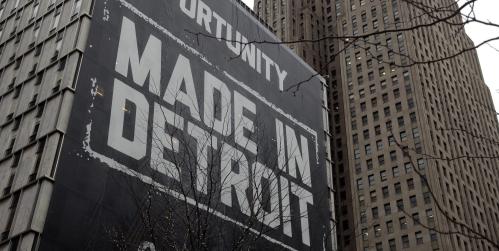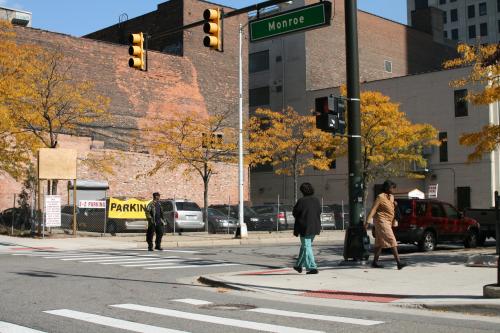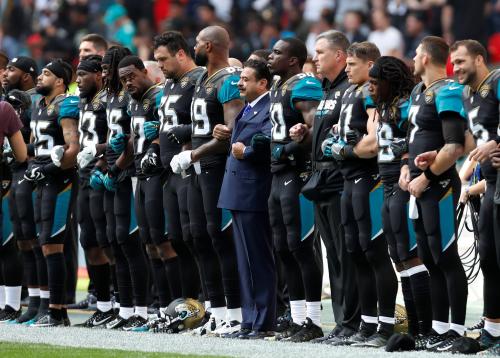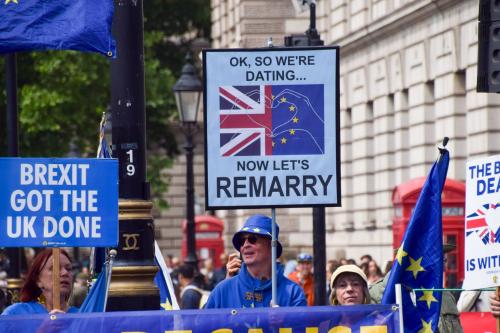A correction was made on November 20, 2017 to an Excel data spreadsheet linked within the post to account for accurate city population data.
When we think of wealth, prosperity and opportunity, black families don’t come to mind. We’ve all consumed a historical narrative that black people, and by extension their communities, are deficits. The manifestation of deficit thinking can be found in notions that small black municipalities need to be annexed or merged with larger less black cities in order to prosper. Developers, business owners, and other stakeholders subsequently don’t invest in cities that would otherwise grow.
Simply put, building upon assets in majority-black cities is an approach that we have yet to significantly try. There are valuable assets in black communities that developers, economists, and urbanists genuinely don’t consider. What I intend to detail here, in my continued series on why majority-black cities matter, is the vital idea that there needs to be a better understanding of assets in majority-black cities that warrant investments.
Diversity, affordability and the presence of a solid middle-class factor in where families and companies consider establishing residences. A thriving black middle-class, a pool of potential workers, and quality educational institutions help form a foundation for population and economic growth.
We’ve all consumed a historical narrative that black people, and by extension their communities, are deficits
Economic prosperity and opportunity for growth exist in many small cities that happen to be majority-black. Some of these cities have elements that should draw families considering new places to live and business owners looking to relocate or set up shop. High incomes are proxies for decent job opportunities, good schools, and safe living environments.
A national map of majority-black cities, ranked by median household incomes of black families, shows that 124 communities outpace the national median household income for all races ($53,889), according to data from the 2015 American Community Survey. Black families are especially thriving in various city/suburbs in the state of Maryland, which hosts more than half of the top 124 majority-black cities in a ranking prepared by the Brookings Metro program.
All majority-black places with black median incomes higher than the national average have populations under 100,000 people; the largest being Waldorf, Md. (pop. 71,399) with a median income of $81,592. The smallest place on the list, Highland Beach, Md. (pop. 110) has the highest median black household income at $158,750.

All majority-black places with black median incomes higher than the national average have populations under 100,000 people
It’s worth noting here that using median income as a proxy for financial status is a very imperfect practice. Measuring the middle of an income distribution – median income – of a particular city often masks the earning and labor disparities of particular groups that are not employed by the dominant industries in a market. That’s especially the case for black families when popular publications put out various lists for the wealthiest places to live. Not everyone benefits from a thriving economy. That’s why colleagues of mine within the Brookings Metro program encourage more robust measures of economic health that include growth, inclusion and prosperity. In addition, there can be large sampling errors – especially among smaller places – when applying median household income. Still, median household income is a convenient and widely used measure that relays associated features of the labor market.
Wealthy black inner- and outer-ring suburbs find themselves alongside their low-income counterparts in the same current that would have large cities becoming larger, subsuming smaller cities that would otherwise die on the vine.
“Merger with the central city is an option more physically contiguous inner-ring suburbs should consider,” writes Aaron Renn, a researcher at the Manhattan Institute for Policy Research. Journalist Eduardo Porter, commenting on small cities’ struggles to adapt to economic shifts, writes, “As technology continues to make inroads into the economy … it bodes ill for the future of such areas.”
Ostensibly, many wealthy black cities with people benefiting from booming economies don’t fit the description of the post-industrial town that hasn’t adapted well to economic change. Instead, they are trying to figure out how to make their small city work like a large one.
WHERE HBCUs INTERSECT WITH MAJORITY-BLACK CITIES
In the chart below, we grouped the more than 1,200 majority-black cities by percentile median black household income (where data were available), and compared them to the nationwide median household income across all races. Additionally, we color-coded the presence of cities containing one or more historically black college or university (HBCU). About half the nation’s HBCU’s reside in majority-black cities.
The presence of an HBCU stands out in the upper half of the income distribution of all black cities, but clearly is not enough to push incomes above national averages. However, a case can certainly be made that HBCUs are competitive assets, especially for small- and medium-sized black cities. However, the systemic devaluing of HBCUs limits their growth as well as the cities that host them. This month, a federal judge ruled in favor of Maryland’s HBCUs in their claim that as a group of colleges they’ve been underfunded. Given the higher levels of prosperity in Maryland, the ruling gives the state yet another opportunity to build up HBCUs and black cities.

Small cities’ presumed inabilities to adapt put many of their futures in doubt. But consider the potential of towns that host or are adjacent to HBCUs. Even though HBCUs make up just 3 percent of colleges and universities in the U.S., they produce 27 percent of African-American students with bachelor’s degrees in STEM fields, according to the U.S. Department of Education. HBCUs can be a significant support in a multipronged economic and workforce development strategy for city sustainability and growth.
Even though HBCUs make up just 3 percent of colleges and universities in the U.S., they produce 27 percent of African-American students with bachelor’s degrees in STEM fields
We commonly think of HBCUs as great places to get a higher education degree. New and existing research examines the benefits that attending an HBCU has on individuals as well as their impacts on regional economies. But researchers tend not to look at HBCUs as anchors for urbanism and business placement. Initial findings of this study on majority-black cities suggest we should also consider proximity to HBCUs as locations where individuals can raise families and build businesses.
One motivation behind this series of reports of black cities is the need to disseminate information on the economic health of majority-black cities as a cohort. When not making comparisons to predominately white cities, we can begin to see variability and opportunity.
Findings from this stage of analysis suggest that there are current places and institutions, many of which are commonly overlooked, that should be a more integral part of future investment strategies.
The Brookings Institution is committed to quality, independence, and impact.
We are supported by a diverse array of funders. In line with our values and policies, each Brookings publication represents the sole views of its author(s).






Commentary
Black incomes outpace the national average in 124 majority-black cities: So where’s the investment?
November 15, 2017